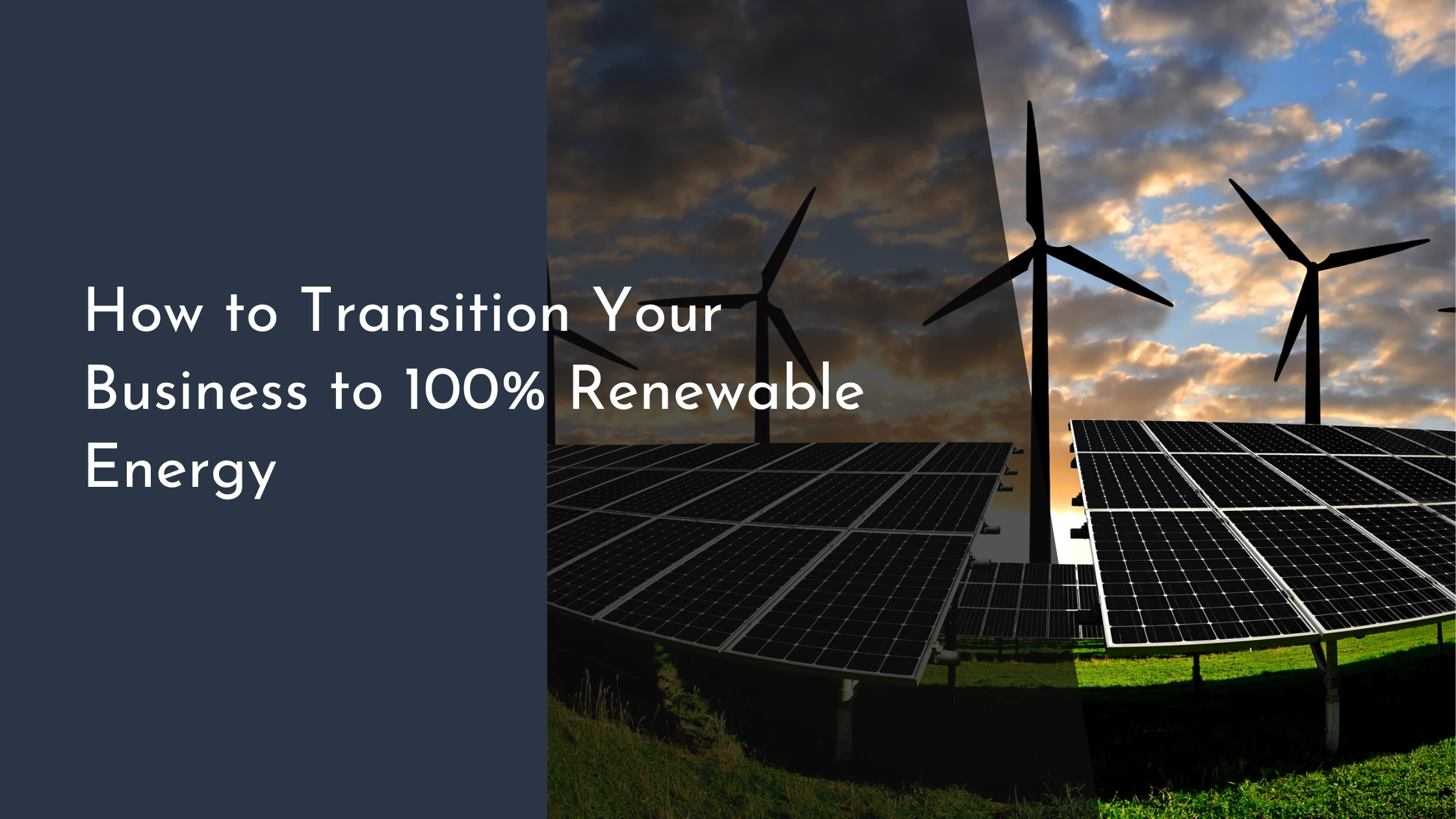How to Transition Your Business to 100% Renewable Energy
Transitioning your business to 100% renewable energy is not only a noble goal but also an increasingly practical one as the world moves towards sustainable practices. The benefits of renewable energy extend beyond environmental impact; they can also enhance your brand reputation, potentially reduce costs in the long term, and insulate your business from the volatility of fossil fuel prices. This guide will walk you through understanding renewable energy options, assessing your current energy usage, implementing sustainable energy solutions, and monitoring your progress while celebrating your achievements.
Understanding Renewable Energy Options
The first step in transitioning your business to renewable energy is understanding the available options. Solar power is one of the most popular choices due to its versatility and declining costs. Installing solar panels can significantly reduce your electricity bills and provide a reliable source of clean energy. Wind energy is another excellent option, particularly if your business is located in areas with high wind speeds. Wind turbines can produce large amounts of energy efficiently and can be a visually compelling statement of your commitment to sustainability.
Beyond solar and wind, there are other renewable energy sources to consider, such as geothermal, hydropower, and biomass. Geothermal energy harnesses the earth’s natural heat, making it a consistent and stable energy source. Hydropower, though more site-specific, offers significant energy output with low emissions. Biomass energy uses organic materials to produce electricity and heat, offering a renewable alternative that can also help manage waste. By exploring these options, you can tailor a renewable energy strategy that best fits your business operations and goals.
Assessing Your Current Energy Usage
Before making the transition to renewable energy, it’s crucial to assess your current energy usage. Conducting an energy audit will help you understand how much energy your business consumes and identify areas where you can reduce consumption. This step is not only about gathering data but also about engaging with your employees to promote energy-saving practices. Simple changes such as switching to LED lighting, optimizing heating and cooling systems, and encouraging mindful use of office equipment can significantly reduce your energy footprint.
Furthermore, understanding your energy usage patterns will enable you to design a more efficient renewable energy system. Analyze when your energy demand peaks and which processes are most energy-intensive. This information will guide you in determining the capacity and type of renewable energy solutions needed. By reducing your current energy needs before switching to renewables, you can make the transition more cost-effective and sustainable. Remember, efficiency is the cornerstone of any successful renewable energy strategy.
Implementing Sustainable Energy Solutions
Once you have a clear understanding of your energy usage and the renewable options available, it’s time to implement sustainable energy solutions. Start by selecting the right technology and partners. Whether you’re installing solar panels on your roof or partnering with wind farms, choosing the right vendors and technology is critical. Look for providers with a proven track record in reliability and customer service to ensure a smooth transition and ongoing support.
In addition to choosing the right technology, consider financing options that align with your business goals. There are numerous incentives, tax breaks, and grants available for businesses looking to adopt renewable energy. Explore options such as power purchase agreements (PPAs), leasing solar panels, or even investing in community renewable energy projects. These financial strategies can help manage upfront costs and ensure that your transition to renewable energy is financially sustainable.
Monitoring and Celebrating Your Success
After implementation, continuous monitoring is essential to ensure that your renewable energy systems are operating efficiently. Use energy management software to track energy production and consumption, identify potential issues, and optimize performance. Regular maintenance checks and updates will help you get the most out of your renewable energy investments. By keeping a close eye on your energy systems, you can make data-driven decisions to enhance efficiency and savings over time.
Finally, don’t forget to celebrate your success! Transitioning to 100% renewable energy is a significant achievement that deserves recognition. Share your journey with your clients, stakeholders, and employees to highlight your commitment to sustainability. This can be done through press releases, social media campaigns, or even hosting events. Celebrating your success not only boosts morale but also strengthens your brand image as a responsible and forward-thinking organization.
Transitioning your business to 100% renewable energy is a fantastic way to contribute to a more sustainable future while benefiting your bottom line. By understanding renewable energy options, carefully assessing your current energy usage, and implementing effective solutions, you can make a successful shift to clean energy. Monitoring your progress and celebrating milestones along the way will keep you motivated and enhance your brand’s reputation. Embrace the challenge with enthusiasm, and watch your business thrive in harmony with the environment.

